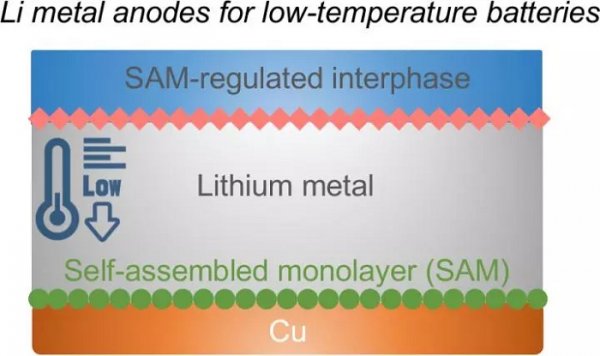A research team from the University of Pennsylvania stated that a technology it has developed to incorporate lithium metal into the anode is expected to increase the energy density of lithium batteries to a whole new level. Its biggest feature is that it can use the "self-assembled layer" to solve a problem that has plagued researchers for a long time-helping lithium metal batteries to keep working normally. In addition, by replacing copper and graphite with pure lithium anodes, not only can a 10-cell capacity battery be produced, but the charging speed can also be greatly improved.

(Picture from: PSU)
When the battery is used under rapid charge and discharge or cold conditions, it is possible to form dendrites on the anode that may cause internal short circuits, or even fire and scrap.
Professor Donghai Wang from the Department of Mechanical Engineering of Pennsylvania State University said: “Lithium metal batteries are the next generation after lithium-ion batteries. They use pure lithium anodes and have high energy density, but they also have dendrite growth and low efficiency. , And short cycle life."
Previously, the research team had thought of using nanotube films and other solutions to overcome the dendrite problem, but the research team led by Professor Wang chose a different direction-to develop a protective layer that can be incorporated into the battery to protect the life of lithium metal .
It is reported that the new battery architecture mainly introduces a "self-assembled layer" of electrochemically active molecules deposited on a copper film, which can effectively avoid the formation of dendrites in lithium batteries.
After the battery is charged, lithium will come into contact with the electrochemically active molecular layer on the deposited copper film, thereby initiating a process to separate and reform part of the lithium on the top to protect it from dendrites.
Professor Wang pointed out that the key to this scheme is to adjust chemical molecules so that they can self-assemble on the surface. It can provide a good solid electrolyte interface during charging and provide protection for the lithium anode.
Tests have shown that the new battery can maintain its function for hundreds of charging cycles. The self-assembly feature enables it to reorganize spontaneously after decomposition.
It is believed that through further work, it is expected to provide long-term reliable power for electric vehicles, drones, and some equipment used in low-temperature underwater environments.
The details of this research have been published in the journal Nature Energy.
Ptfe Cord Stock,Ptfe Retraction Cord,Expanded Ptfe Tape,Ptfe O Ring Cord Stock
Cixi Congfeng Fluorine Plastic Co.,Ltd , https://www.cfptfeseal.com